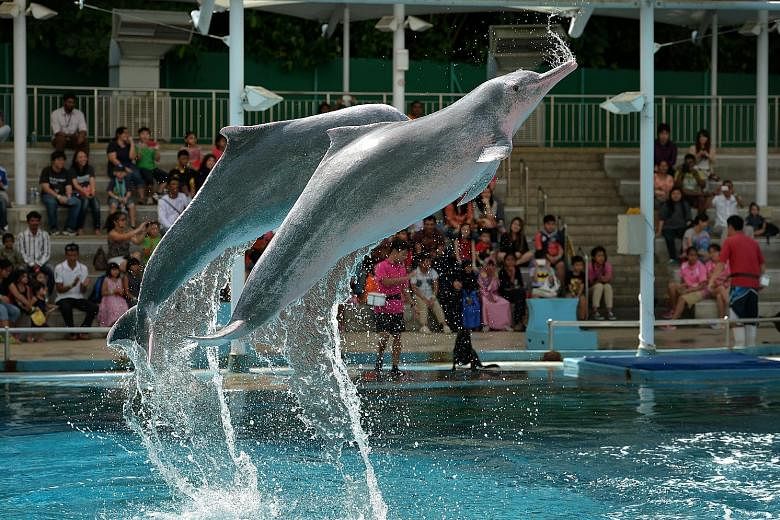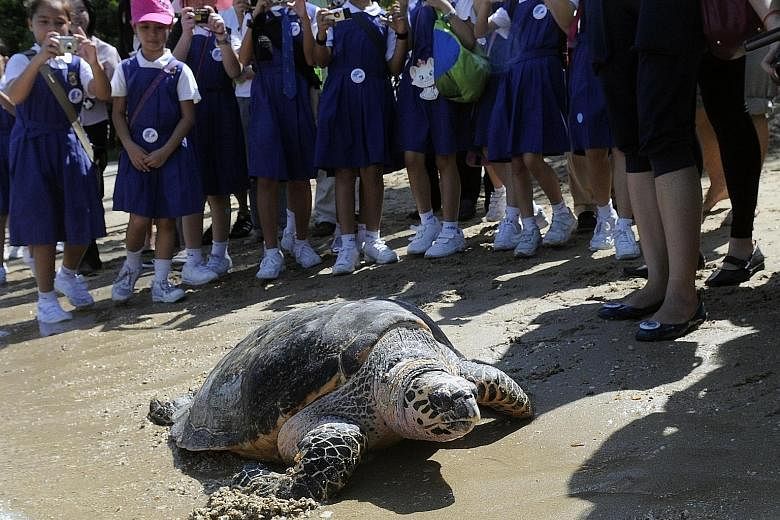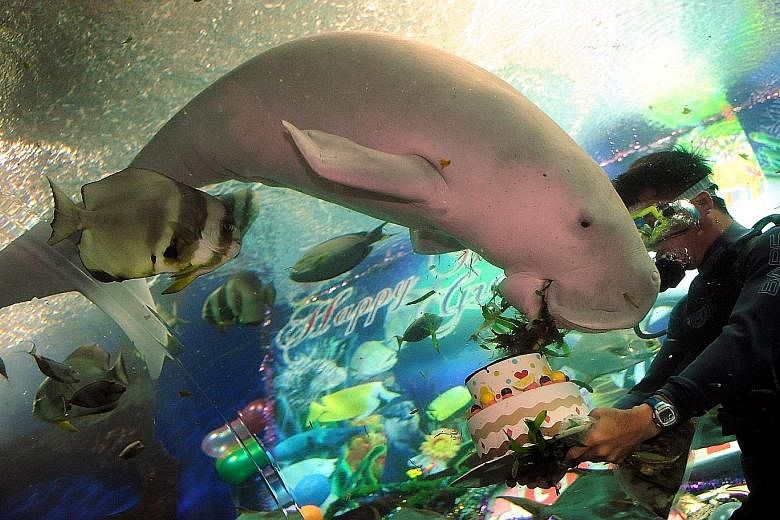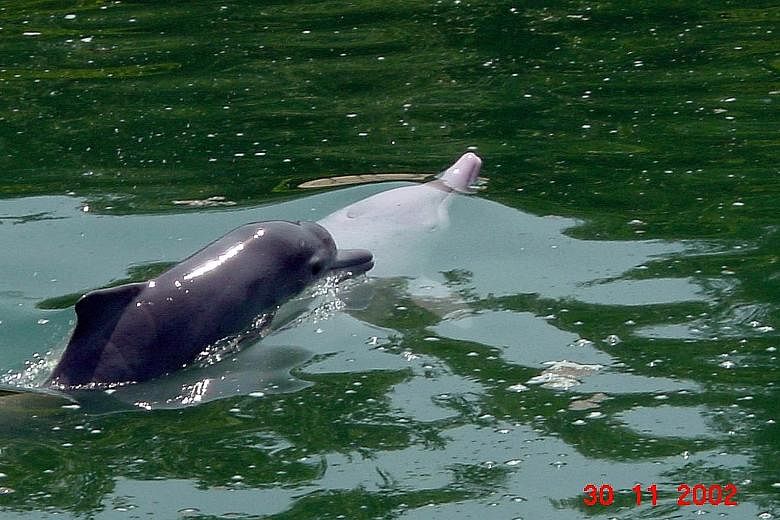A persistent conundrum in nature conservation is finding a balance between breeding animals in captivity to prevent extinction and enhance public awareness, and channelling resources to protect them within their natural habitats.
The issue has been thrust into the spotlight again with the closure this coming Sunday of the 25-year-old Underwater World Singapore (UWS). The lease on its premises nears expiry and it faces stiff competition from the Marine Life Park and Dolphin Island at Resorts World Sentosa. UWS was the largest tropical fish oceanarium in Asia when it opened in 1991.
Conservation and animal welfare groups have criticised it for catching dolphins in the wild instead of sourcing ones bred in captivity, keeping animals in bad condition and forcing them to perform unnatural acts.
But UWS managers said in 2009 that their successful breeding of dolphins and other species indicated that the animals were well taken care of and helped to maintain a diverse gene pool for the viability of the species.
An Indo-Pacific humpbacked dolphin, or pink dolphin, was born UWS in 2002, which the attraction said was the world's first recorded captive birth of the species.
The oceanarium has also successfully bred about 15 species of fish, including sharks, some of which had not been bred elsewhere.
Then curatorial director Bruce Mackay said in 2001 that captive breeding saves these species from being taken from the wild for commercial trade.
In 2010, UWS released 18 critically endangered hawksbill turtles, eight of them with satellite tracking devices to study their migratory behaviour in collaboration with organisations in Japan and the United States.
However, photojournalist and activist Debby Ng, who founded local marine protection group Hantu Blog in 2003, said: "Success in captive breeding and release alone are not conclusive measures of conservation success." She added that long-term monitoring and management are necessary to determine whether the efforts have helped wild populations persist.
"Zoos and oceanariums can provide a crucial service if they teach respect for nature and foster endearment of the wild."
Outreach activities are part of the mix at UWS, such as holiday programmes in which children attend educational talks about marine life and spend the night in UWS' underwater tunnel sleeping with the fish.
UWS has also given stranded wildlife a home. Gracie the dugong was taken in in 1998 after its mother drowned off Pulau Ubin. Gracie lived at UWS until 2014, when it died of an acute digestive disorder.
But UWS still faced controversies. In 2004, the Animal Concerns Research and Education Society discovered that the oceanarium's six dolphins had been originally caught in the wild rather than bred in captivity as previously recorded, and called for them to be set free.
The Agri-Food and Veterinary Authority (AVA), however, clarified that as the dolphins had already been in captivity for at least three years in a Thai marine park prior to coming to Singapore, UWS could legally keep them.
In 2014, animal welfare and conservation groups Wildlife Watcher (Singapore) and Sea Shepherd Conservation Society reported that the dolphins were kept in rusty enclosures, had skin diseases, were made to perform unnatural acts and were exposed to loud music.
But an inspection by the AVA found the dolphins to be in a "satisfactory" condition. A pink dolphin was born there that year.
Mr Stephen Beng, chairman of the marine conservation group of the Nature Society (Singapore), said that the question remains of the "moral acceptability of keeping animals in captivity, especially those with larger ranges and complex social structures" such as dolphins.
Ms Ng noted that people can admire such animals in their natural habitats, even in Singapore.
In fact, there have been several recent sightings of wild pink dolphins in Singapore waters.
She added that some aquariums in the United States actually offer field trips to observe animals in the wild.
•Additional reporting by Rachel Oh





